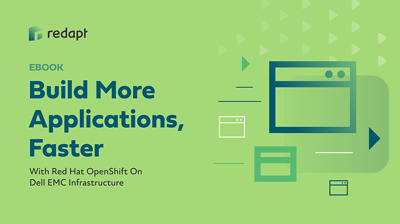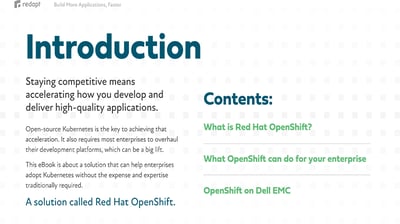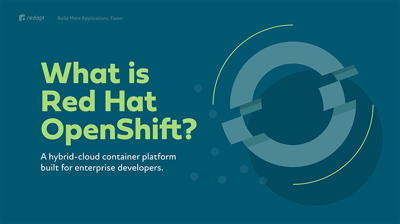Kubernetes rules the roost when it comes to the modern development of applications. But for many enterprises, adopting it comes with a steep learning curve and requires new technical skills.
This is where OpenShift can help. Red Hat’s offering is an enterprise-ready Kubernetes platform for deploying applications in a hybrid cloud environment. It’s designed to make adopting Kubernetes less daunting, no matter what size your company is.
Download Now: Build More Applications, Faster (with Red Hat OpenShift on Dell EMC Infrastructure)
Best of all, enterprises using OpenShift are able to use all the tools of modern development—containers, microservices, CI/CD pipelines, etc.—on premises and in the cloud with the very same tech stacks their developers trust.
Don’t just take our word for it. Here are three examples of enterprises putting OpenShift to work from Red Hat itself.
1. Scholastic
The education publishing company utilized OpenShift and a cloud provider in order to build a flexible, microservices-based process for developing new products.
OpenShift’s source-to-image capabilities made it possible for the company to accelerate development speed by producing standardized, reusable images, and by moving its legacy JavaTM and Spring Boot applications to OpenShift. Their microservices in use quickly jumped from 20 to 200.
The results were impressive. Not only was Scholastic able to cut down time-to-market from months to weeks, it did so without service interruptions.
2. Ascend Money
Southeast Asia’s largest financial technology company turned to OpenShift in order to develop a cohesive app development and delivery approach.
Working with Red Hat Consulting, the company moved its legacy core applications and cloud-native services to the OpenShift Container Platform. Red Hat Ansible Tower provides automation for the company to deploy applications and new environments across regions.
As a result, Ascend Money now has a singular platform for IT and developers can collaborate regardless of their location or preferred development environment.
3. Hilton
When the hospitality giant was looking for ways to modernize its guest experiences, they went with OpenShift for a hybrid cloud approach for the most flexibility. Along the way, they abandoned their long-standing waterfall development process in favor of containers and DevOps.
Their new hybrid cloud approach utilizes the OpenShift Container Platform for simple portability of applications and microservices, as well as Red Hat Enterprise Linux for a solid operation system. Other tools included Red Hat Satellite for deployment in the cloud and Ansible for automation OpenShift cloud deployments.
Among the new services the company developed with their new approach was the Hilton Honors mobile app, which makes it possible for guests to choose a room, check in, and access their room key from their smartphone.
To learn more about how Red Hat OpenShift helps enterprises, check out their website.
Learn more about OpenShift and how Redapt can help you integrate it into your own enterprise. Download our free eBook Build More Applications, Faster (with Red Hat OpenShift on Dell EMC Infrastructure).


















